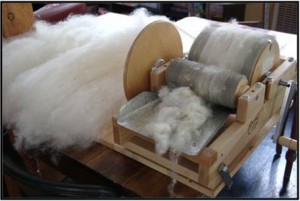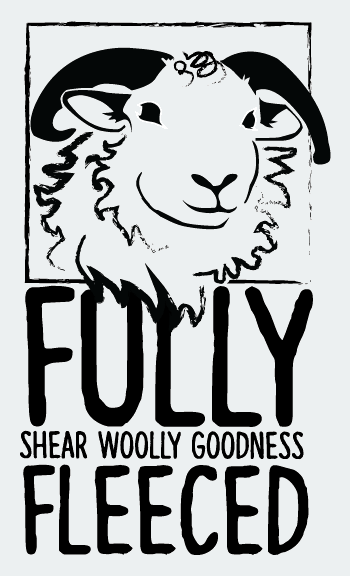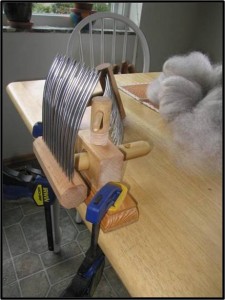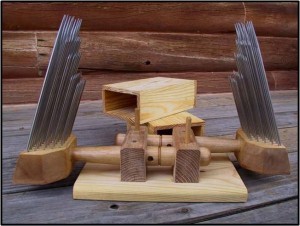Carding is best for short to medium length fibers and is specifically called for in prepping fiber for “woolen” spinning.
Carders separate and align fibers, but do not screen out second cuts or VM.
Flick Carder (or dog brush)
- Remove veg and second cuts, dry tips, etc.
- Good for spinning from the lock., or prep for drum carding
- Also good for cleaning drum carder!

Hand Cards
- Make rolags to spin woollen-style!
- Use hand card as burnishing tool for drum carder.
Drum Carder
- Many styles available, hand turned or motorized.
- Very important to have adjusted properly for transfer of fiber between drum and ease of turning.
- Drums should be about an index card thickness apart.
- Try to keep fiber out of axles.
- Longer fibers can sometimes wrap around small drum and be difficult to remove. (may need to cut)
- Can use hand card as burnishing tool, to smooth batt.



